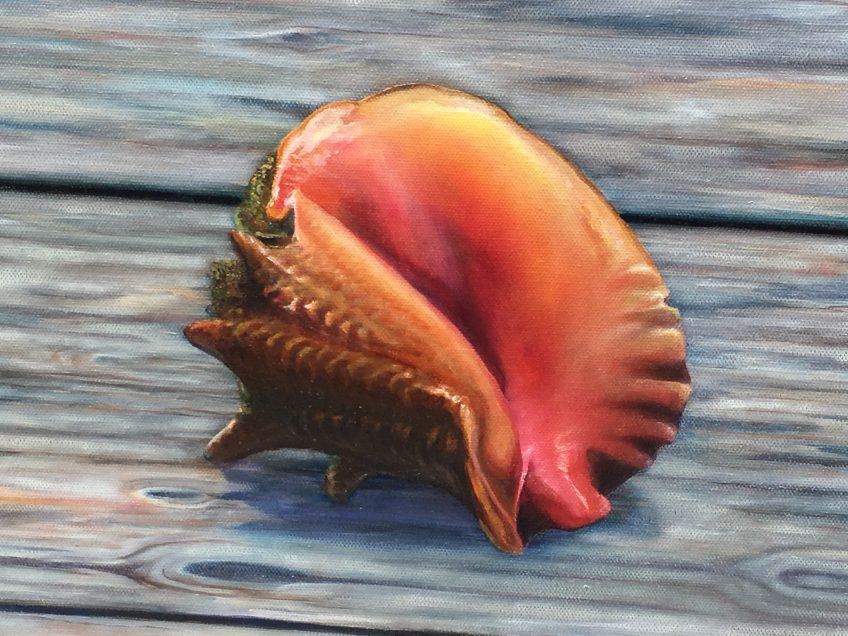Anyone travelling too the Caribbean and Central Americas, as well as the Bahamas and South Florida have encountered conch. Whether it be in the water or just on a menu, it is sure to cross your path in some form.
Conch, a mollusk, has been a staple in these parts of the world for a very, very long time. In the Bahamas, artifacts from the original native Indians who inhabited the islands long before Columbus came ashore, shows they used conch as a source of food and sustenance, as well as used the shells for tools and adornments.
In many areas where conchs live, they are as much a part of the culture as they are of the marine environment and diets. A conch shell sits high atop the Bahamian Coat of Arms. Key West is also known as the “Conch Republic” and has a conch on their official flag. Some locals in the islands are known as “Conchy Joes”.
In addition to being the star on most menus in the form of fritters, salads, stews and fried (cracked), conch is a delicious and nutritious staple for many. Their popularity also accounts for conch being responsible for a number of jobs—cooks and chefs, fishermen, anyone that caters to tourists and/or is a hungry tourist to name a few—they are just an important part of life in this region.
Sadly, for a variety of reason, conch are quickly becoming a victim of their own popularity and are disappearing far too quickly from the environment they call home.
Being in the Bahamas, I have been attuned to the serious decline of the conch population. The warning signs are all there—very loud signs!—that if intervention to protect conch is not done, and very soon, the Bahamas will suffer a similar fate as that of Bermuda, the Florida Keys and elsewhere. The conchs, once overfished and stressed, just do not bounce back—they just disappear!
Studies have shown that to have a healthy conch population, there must be approximately more than 50 mature, adult conchs within a hectare (Appro. 2 1/2 acres or 10,000 square meters) to successfully reproduce. Recent population counts show less than 10 conch per hectare within the Bahamas. These numbers are frightening!
Conch are not mature enough to reproduce until approximately 4 years of age with a thickly formed shell lip of no less than 15mm (roughly ½ inch).
It will not only take even more stringent rules, regulations and laws (many laws are already in place!) to help the conch, but it will take the conscience involvement of every boater and individual that is on the waters to help them.
Everyone needs to get onboard and respect the laws already in place—limits per boat and per person, lip size and thickness, no Rollers!, etc.
Another way to help is to make it a point to patronize food establishments that follow the laws of buying or using conch fishermen who only sell mature conchs. Check out the local stall vendors and only spend your money at those whose shell piles show empty shells of proper size and maturity.
Please respect these rules and think of the future!
I fear that unless everyone gets onboard, the Bahamas may soon find itself sharing the same fate as other regions where conch used to reign supreme—but no longer. It would be sad indeed to know that future generations would be denied being able to experience the joy of finding a conch in a bed of grass, the wonderful taste they add to our meals and those gorgeous pink shells—all due to our own generations selfishness and lack of foresight.
